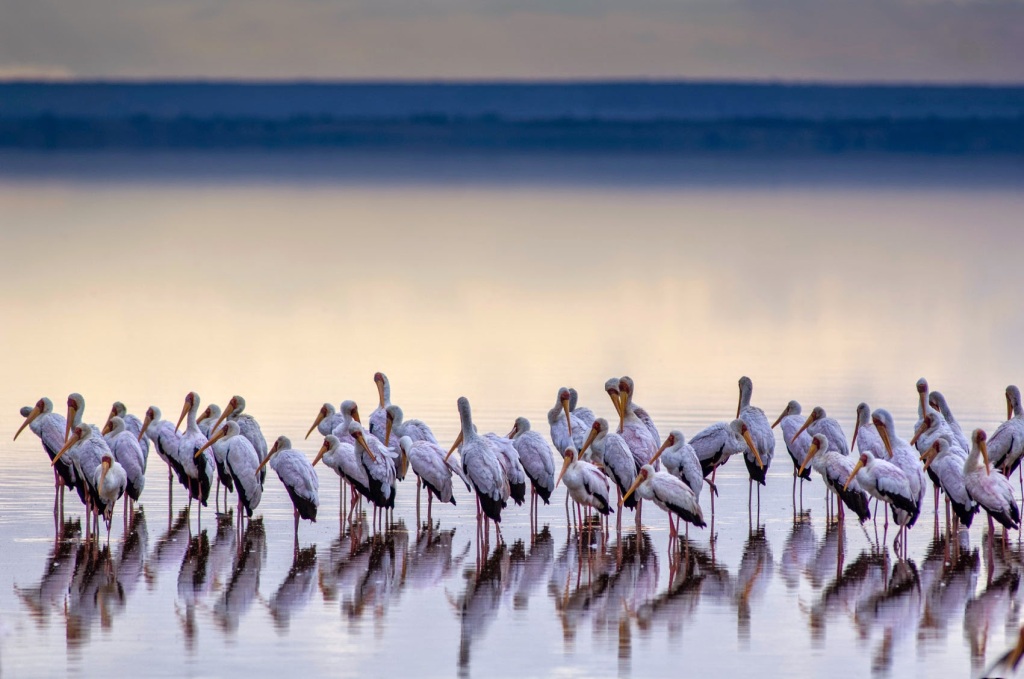Lake Manyara
Lake Manyara National Park
Lake Manyara National Park is situated in tropical woods at the base of the Great Rift Valley. The reserve was specially meant to be a sanctuary for herds of elephants, thus winning international acclaim. In the 1970s and 1980s poachers made colossal damage to the settlement of elephants, exterminating the animals with automatic weapons. Luckily, nowadays the population of elephants is gradually recovering. Lake Manyara – one of the main places of interest in Tanzania, is located in the National Park. It is second to none of Tanzania’s world-famous natural sites, such as the 12 mile volcanic crater Ngorongoro and Serengeti National Park.

Interesting Facts about Lake Manyara
Lake Manyara in Tanzania was formed more than 2 million years ago as a result of infilling of hollow meadows, that took shape on the east of Africa in the process of the formation of the Great Rift Valley. The lake lies near the equator, however, it has a rather elevated position (the surrounding hills are located at about 9 miles above sea level), causing low temperatures and low humidity levels which are not typical for the east of Africa. The climate creates heavenly conditions for large mammals and birds. Lake Manyara hardly falls behind Tanzania’s other stour natural objects in terms of variety of species. However, the lake’s geographic location is its stumbling block: during arid years Manyara dries up almost entirely.
Lake Manyara became extremely popular after the publication of the book Among the Elephants by the famous English biologist Iain Douglas-Hamilton, who dedicated his life to the study of African elephants and the struggle for their conservation in Manyara National Park. Fascinated by the beauty of the lake’s natural sceneries the researcher wrote in his book: “We found in Manyara the peace and the sense of unity with nature, which others seek in the mountains or at sea.”
The Inhabitants of Lake Manyara National Park
Safari in Lake Manyara National Park in Tanzania is an excellent opportunity to watch wild animals in their natural environment. By the density of mammal population the shores of lake Manyara occupy leading positions in the world. African elephants are especially numerous: 6 elephants per 2.3 sq. miles, which is an absolute record for Africa. Buffalos are second: 18 per 2.3 sq. miles. As for other large animals, one can find lions, black rhinoceroses, hippos, impala antelopes, gnus and dik-diks, giraffes, zebras. The most famous primates at lake Manyara region are baboons, who live in large troops.

Lake Manyara: the Variety of Flora
There is obvious otherness in the flora of eastern and western shores of lake Manyara.
East is a thickly wooded rift steep with an abundance of underground waters, constantly flowing from the slopes of craters, located above the lake. The flora is rather hydrophilous, consisting of Croton (from spurge family), Ficus Sycomorus, Kigelia or Sausage tree. The Western coast is the kingdom of vegetation, specifically because of Ruellia and Baobab trees, which are used to the alkaline waters. The little-studied Marang forest lies to the south.
The natives of Tanzania were especially provident, realizing the importance of lake Manyara for the country’s economy as an international travel destination. In 1981 UNESCO listed the park in the world network of biosphere reserves, which entails substantial financial and scientific support from international organizations.


Comments
Post a Comment